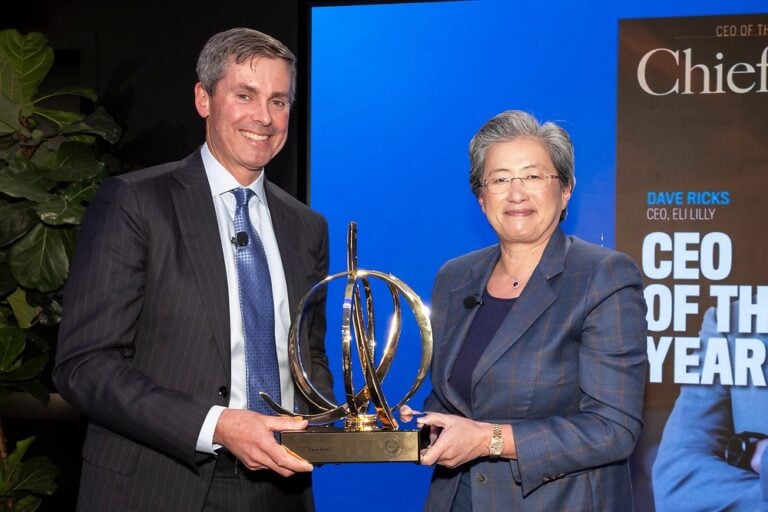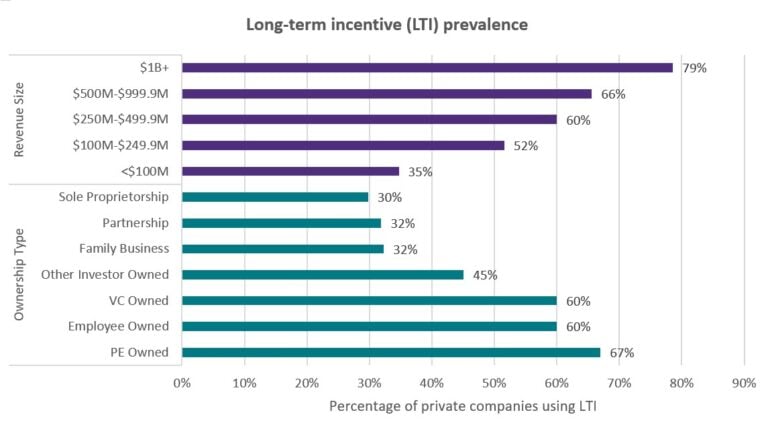


Editor’s note: Longtime Chief Executive columnist Jonathan Byrnes passed away on May 7 at age 75 after a long and valiant fight against cancer. The MIT professor, consultant and cofounder of Profit Isle was a brilliant mind, thoughtful businessperson—and kind man. We will miss him. This is the final column that he submitted to us before his passing.
***
In a Chief Executive column, “How to Price and Manage Value-added Services,” I explained how to price and manage lucrative, strategically important value-added services. The article generated a lot of interest. In this column, I describe how to develop compelling, high-payoff value-added services and illustrate the process with a detailed case study of how Baxter International developed its pioneering vendor-managed inventory.
Several years ago, Baxter pioneered a powerful set of value-added services—now called Vendor-Managed Inventory (VMI)—that fundamentally redefined its business and became a cornerstone of contemporary supply chain management. The company used these value-added services to move from an eroding position as a supplier of increasingly commodity-like products subject to constant price wars to a new position as a highly profitable, strongly differentiated provider.
Baxter’s experience shows that value-added services like VMI can provide more than operating cost savings: They can create huge new customer value and reverse a company’s fundamental strategic positioning.
Baxter was facing an increasingly untenable situation. The company manufactured and sold a range of hospital supplies to a wide variety of medical institutions. Baxter’s anchor categories were relatively undifferentiated IV solutions and related products, subject to constant global price wars. For example, the price of a liter of a typical IV solution was about $1.00 (these numbers are disguised), and the essence of the sales process was determining whether the price on a multiyear contract would be 97¢ or $1.03.
Baxter’s sales relationships focused on the hospital pharmacists and purchasing staff, who primarily sought to minimize price. Baxter’s sales force only rarely interacted with high-level hospital executives.
Hospitals’ order patterns fluctuated severely, causing large inventory and production problems in Baxter’s operations. This fluctuation had two causes. First, the patient care and clinic (PC/C) nurses did not trust the hospital stockrooms to have adequate goods, so they hoarded up to six weeks of supplies on the floors and ordered from the hospitals’ stockrooms infrequently in large tranches. Second, quarter-end sales drives by Baxter’s sales force were common. The operating problems caused by the erratic order pattern led to Baxter supply chain and service difficulties that, in turn, caused hospital staffs to hoard even more supplies and order even more erratically.
Baxter’s operations managers had been careful to control their operating costs. The company kept staff levels lean and achieved high levels of internal productivity. But Baxter was stuck trying to respond efficiently to an inherently inefficient situation. In the words of one division president, “We were getting very good at mowing the lawn around Stonehenge without ever questioning why the stones were there.”
At one point in this period, several hospitals had asked a Baxter division president to assess the emerging concept of a prime vendor. The early prime vendor work envisioned a “master supplier” who would funnel supplies from a variety of suppliers through one warehouse to the hospital dock with consolidated invoicing. To explore whether there was an even more beneficial way to restructure the hospital-supplier relationship, the Baxter executive assembled a small team. He asked them to follow the supplies downstream from the Baxter warehouse, across the hospital dock, to the actual points of patient consumption in several large hospitals.
When the team developed a systematic channel map of intercompany product flow, they saw a very inefficient supply chain. As one team member said, “It was like walking through a looking glass—not once, but many times.” The channel had multiple, redundant segments.
In the first segment, within the walls of Baxter’s facility, the company received hospital orders, picked the supplies, packed them, shipped them to the hospital and invoiced for them. In the second segment, the Baxter team saw the mirror image once the supplies reached the hospital: The hospital issued the orders, received the supplies, unpacked the boxes, put the supplies away in the stockroom and paid the invoices.
As the team followed the supplies downstream, they saw another channel segment within the hospital that closely resembled the other two. The PC/C areas issued requisitions to the stockroom, the stockroom picked the orders, the stockroom shipped the orders to the PC/C areas and the nurses on the floors put away the supplies. In hospitals with an exchange cart system, the process was a little different, but the effect was the same. In some very space-constrained hospitals, there were additional mirror-image segments such as bulk stockrooms that shipped upon requisition to breakbulk stockrooms, which then shipped upon requisition to the PC/C areas or filled the carts. The team saw that the materials management steps of each channel segment were mirror images of the others.
The Baxter team then conducted in-depth studies of the materials management and supply chain costs of several large hospitals. They carefully mapped the product flow and measured all areas of each hospital’s operations, specifically nursing, finance and systems. Not surprisingly, the team found that the materials management and related supply organizations were costly departments in each hospital. However, the team also found very large pockets of hidden materials-related costs in each hospital that were not captured in the hospitals’ account categories—especially in nursing, where supply chain-related tasks often amounted to about half of the nurses’ time. When the Baxter team checked these findings with the individuals involved, the hospital personnel were amazed at the magnitude of the actual costs, but they verified the conclusions.
As the team analyzed the numbers, they found that the total cost of a “delivered” product at the patient’s bedside was about $7, contrasted with the $1 Baxter sales price at the hospital dock. Of the $6 increment, about half stemmed from addressable inefficiencies. A startling new perspective had emerged: Over 85 percent of the supply chain was outside Baxter’s traditional business definition.
The Baxter team’s careful analysis had quantified the cost and service characteristics of each intercompany segment and step. This detailed view showed a great potential to achieve joint hospital-Baxter economies by (1) eliminating redundant steps and stock; and (2) altering the picking, materials management and information processing systems. The analysis showed that between one-third and one-half of the $6 in internal hospital materials costs could potentially be eliminated, with a substantial increase in service levels and staff convenience.
After discussions with key hospitals, the team developed the initial model for what it called the “Stockless System” (now branded as “ValueLink” and offered by Cardinal, which bought this Baxter division). In essence, this is how the system works: The hospital specifies its stock requirements for each PC/C area; an on-site Baxter employee counts the stock in each PC/C area each day or few days; and the employee transmits it to Baxter’s warehouse, where a replenishment order is derived. At the warehouse, it is put into PC/C area-specific containers. It is delivered each day or a few days directly to the appropriate PC/C area, and the Baxter employee puts the stock away. Finally, Baxter invoices the hospital.
Baxter had a clear opportunity to create massive new customer value and redefine its business. The Stockless System offered significant cost-savings and powerful service improvements because it streamlined the whole supply chain. It also changed the strategic paradigm of the Baxter-hospital relationship from the 97¢-$1.03 negotiation to mutual value creation on a much larger scale. Stockless promised great benefits but required a significant change in the hospitals and at Baxter.
The Stockless System enabled Baxter to fundamentally redefine its business. Baxter shifted its strategic positioning in key accounts from a supplier of commodity-like products subject to price wars to a new position as a highly differentiated provider of value-added products and services. That gave Baxter great strategic benefits in four areas.
First, Stockless created large cost reductions in both the hospitals and Baxter. The hospitals eliminated several steps in the supply chain and greatly reduced their inventory levels. Valuable space was released, and hospital personnel were redeployed into patient care. Baxter reduced inventory and handling costs by forming multi-hospital hubs. The company also gained extensive, unexpected operating benefits because Stockless eliminated the erratic hospital order pattern.
Second, Baxter’s sales increased dramatically, by over 35 percent, even in highly penetrated accounts. The sales increase was directly driven by the operations-to-operations relationship that formed between the head nurses on the floors and the Baxter on-site coordinators. The Baxter coordinators were not sales reps but helpful lead hands from the warehouse. At the same time, the near-perfect service levels allowed Baxter’s sales force to focus on selling new products rather than solving supply problems.
Third, Baxter’s division president was able to establish close working relations with the CEOs of the key hospitals through the process of creating the value-added services. Because Stockless involved large savings and significant changes, the Baxter relationship rose from the pharmacist/buyer level to top hospital management. When one hospital CEO saw the magnitude of the potential gains, he exclaimed, “I only have two questions: Can you really do this? and, Can we trust you?” As a reliable, major supplier, the answer was “yes” to both.
Fourth, Baxter developed an enduring strategic advantage over its competitors. The process of creating the Stockless operating partnership required four key elements: (1) confidence of the customers; (2) demonstrated ability to perform; (3) Baxter commitment and resources; and (4) joint end-to-end business understanding and operations-to-operations relationships. Once Baxter established this new way of doing business, its competitors could not easily follow.
Baxter also had to undergo significant changes in five critical areas.
Account Selection. Baxter’s management realized early on that account selection was crucial to success. The company had to be very careful in its choice of target hospitals because these relationships were very intensive. The company could not successfully be “everything to everyone,” so the top managers carefully qualified and prioritized their customers according to potential gain, operating fit and their willingness and ability to change. At times, Baxter’s management faced the complex problem of declining an operating partnership with an important but non-target customer.
Account Coordination. In the old paradigm, the sales rep was the primary link to the account, sales plans were confidential, and operations personnel were largely excluded. During the early planning stages, the Baxter division president requested that everyone who had interfaced with one major hospital meet in the cafeteria at a particular time. Over 70 people showed up at the meeting. He found that (1) many people at the meeting did not know that the others were working with the customer; (2) the truck drivers and customer service reps had valuable information and relationships that were not being tapped; and (3) the group did not have a unified view of the customer’s needs and direction.
In response, the Baxter executive formed a set of multi-functional account teams for key target accounts. These teams were crucial in planning and developing the operating partnerships. Once this account planning process was developed, he invited the customers to send their counterpart managers to participate. Account planning and account coordination then took on a very different, more powerful meaning: Rather than having an implicit adversarial tenor, it became a process for jointly moving the partnership forward.
Selling the Stockless System. The process of selling VMI to a hospital CEO differed greatly from the normal product sales process. A close CEO-to-CEO link was needed because the partnership entailed a new customer-supplier relationship. Baxter made its first sale to a smaller hospital run by a particularly innovative CEO and then brought others to view the “showcase.” At one point, Baxter’s management assembled a focus group of major hospital CEOs and asked them for suggestions on how to sell the Stockless System. The CEOs replied that it was essential that Baxter sell a cluster of key accounts in a city so each hospital CEO would have the ability to face his or her hospital staff with the need for change.
Operations. Important operations changes were needed in several areas. First, key operations managers were integrally involved in developing the Stockless alternative and estimating the likely gains. This required that they understand internal hospital operations even better than the hospital’s personnel. Second, the traditionally inward-looking operations staff had to learn to manage sensitive, scattered-site operations within customer premises. Third, the supply chain had to be restructured to deliver near-perfect service without incurring additional cost. Fourth, the operation had to become extremely flexible to adapt to the changing customer-partnership mix, and Baxter’s operations managers had to master the complexity of a dual-distribution system. Finally, the operations team had to learn to participate in the multi-functional account planning process.
Management. Because Stockless represented a new way of doing business, Baxter’s management had to take the lead in developing new, more open relationships with key customers. The operating partnerships increased the risk and stakes for Baxter’s management, because the relationships were more complex, the standards more stringent and a failure could mean the loss of a major account. Important management control and sales incentive changes were needed because Stockless eliminated quarter-end sales drives, led to significant short-term sales reductions as inventory was drawn down, and required new measures to encourage operations involvement in the sales relationship.
Stockless also generated two characteristic controversies.
First, the SVP of sales argued that Baxter should only include its own products in the new system, so competitors would not gain Baxter’s competitive advantage. The president disagreed, arguing that the hospital’s prime benefit came from replacing its internal material management function, and that these savings would not occur unless Baxter replaced the hospital’s whole process.
Second, the sales SVP argued that Baxter should not charge for the new service, instead it should offer it as a “perk” to increase its product sales volume. Again, the president differed, reasoning that Stockless had important value, and that the hospital CEO had to deeply understand the new value, and be willing to pay for it, to become comfortable in removing the hospital’s materials management function (a decision that would be very hard to reverse).
The case of how Baxter pioneered its “Stockless” VMI system demonstrates that value-added services like VMI can dramatically improve a company’s strategic positioning and sales as well as its asset productivity. To be successful, an executive must carefully segment the markets, understand that these intensive relationships can only be developed with fewer partners, systematically qualify the target accounts and explicitly accept a multi-tiered account relationship system. The top manager also must understand the magnitude of the parallel changes that must occur in the company’s sales, operations and core management processes. Careful forethought and planning pays huge dividends.
Most leading companies are now reducing their supplier base by 50 percent or more. The most desirable customers are seeking more intensive operating partnerships with fewer, more capable suppliers. This is creating an historic opportunity for the managers who learn to manage in the new paradigm, paying strong dividends for years into the future.




0

1:00 - 5:00 pm
Over 70% of Executives Surveyed Agree: Many Strategic Planning Efforts Lack Systematic Approach Tips for Enhancing Your Strategic Planning Process
Executives expressed frustration with their current strategic planning process. Issues include:
Steve Rutan and Denise Harrison have put together an afternoon workshop that will provide the tools you need to address these concerns. They have worked with hundreds of executives to develop a systematic approach that will enable your team to make better decisions during strategic planning. Steve and Denise will walk you through exercises for prioritizing your lists and steps that will reset and reinvigorate your process. This will be a hands-on workshop that will enable you to think about your business as you use the tools that are being presented. If you are ready for a Strategic Planning tune-up, select this workshop in your registration form. The additional fee of $695 will be added to your total.

2:00 - 5:00 pm
Female leaders face the same issues all leaders do, but they often face additional challenges too. In this peer session, we will facilitate a discussion of best practices and how to overcome common barriers to help women leaders be more effective within and outside their organizations.
Limited space available.

10:30 - 5:00 pm
General’s Retreat at Hermitage Golf Course
Sponsored by UBS
General’s Retreat, built in 1986 with architect Gary Roger Baird, has been voted the “Best Golf Course in Nashville” and is a “must play” when visiting the Nashville, Tennessee area. With the beautiful setting along the Cumberland River, golfers of all capabilities will thoroughly enjoy the golf, scenery and hospitality.
The golf outing fee includes transportation to and from the hotel, greens/cart fees, use of practice facilities, and boxed lunch. The bus will leave the hotel at 10:30 am for a noon shotgun start and return to the hotel after the cocktail reception following the completion of the round.